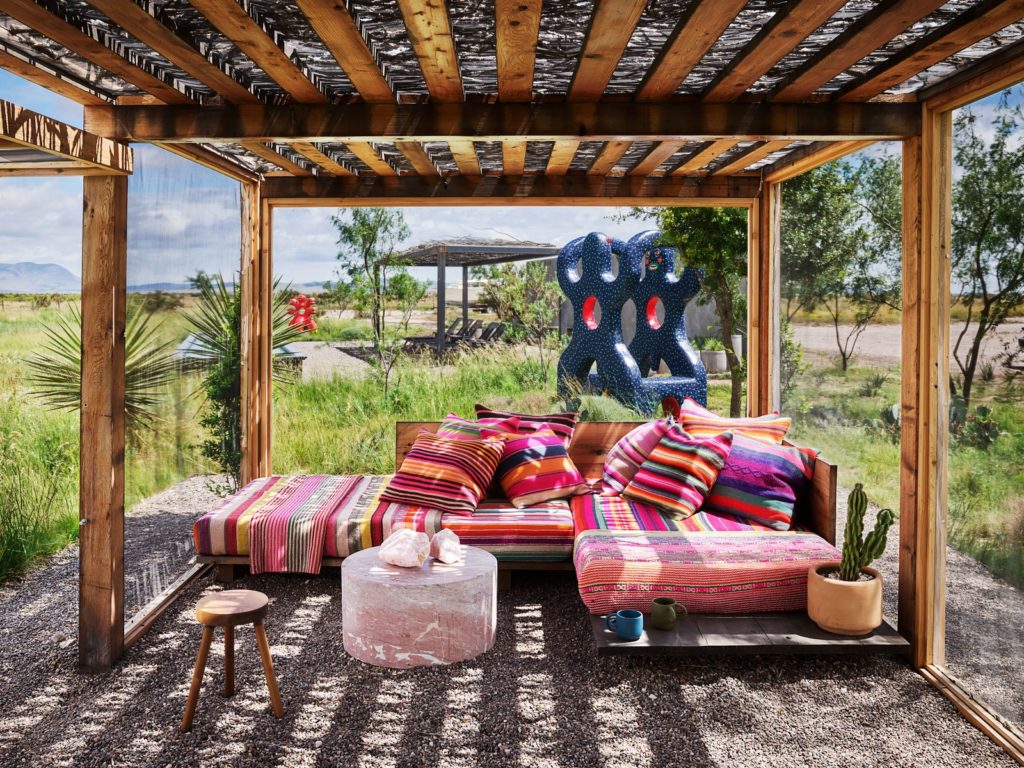When it came to designing a suitable house for his 10-acre parcel of heaven, the photographer adopted a sort of Occam’s-razor approach to architecture. “I was going for simplicity—something monastic but attractive, the easiest and most economical thing I could build,” he recalls. “The problem is that there’s nothing simple about building out here, especially when you have to put in power and septic systems and drill a well. Also, simplicity in architecture, with a modicum of grace, turns out to be quite difficult. My humble idea of desert living just kept ballooning.”
Vintage Bolivian pillows and textiles from Garza Marfa decorate a sofa beneath a pergola. Brett Douglas Hunter sculpture.
After considering, and rejecting, a wide range of prefabricated options, Friedman settled on a modular system of glulam timbers, steel connectors, and structural insulated panels (SIPs in construction parlance), all shipped to Marfa and assembled on-site under the supervision of contractor Billy Marginot. A taut modernist box laid out on an exacting grid, the house features a two-foot clerestory that completely encircles the structure and makes the roof appear as if it were floating on a cushion of light when the home is illuminated at night. To maintain the integrity of the design, all the mechanical systems and wiring are channeled through the concrete foundation.
The modular kitchen by Vipp has Gaggenau and Liebherr appliances. Art by Larry Bell.
The pool, made from a shipping container, is another prefab element. “It arrived from Canada on a flatbed truck, and we just craned it into a hole we dug. I hooked up the services and was swimming the next day,” Friedman explains. Outdoor amenities at Rancho Friedman also include a shade structure with pop-up screens for alfresco entertaining and a second, Juddian shade structure by the pool.
For the decorating portion of the process, the well-traveled photographer relied on a formidable roster of advisers and éminences grises. “I’m lucky to have worked with, and befriended, some of the best designers in the world, so I naturally turned to them for guidance,” he confesses. That lineup includes Steven Gambrel, who made the chic table lamps in the living room; Nicole Hollis, represented by end tables from her recent collection for McGuire; Brigette Romanek, who helped design and fabricate the green and rose–colored marble table that anchors the living room; and Ken Fulk, who gifted a brass bar cart inspired by a 1960s Italian model. Friedman himself made his own contribution to the medley in the form of multicolored cowhide carpets from his new collection for Kyle Bunting.





